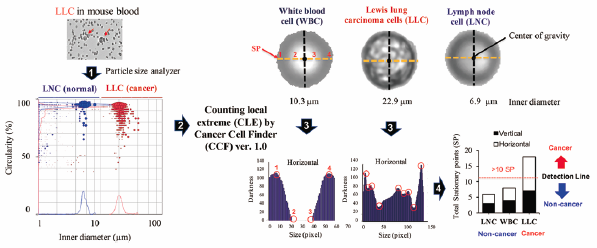- J-STAGE home
- /
- Biological and Pharmaceutical ...
- /
- Volume 41 (2018) Issue 4
- /
- Article overview
-
Babita Shashni
Faculty of Pharmaceutical Sciences, Tokyo University of Science
-
Shinya Ariyasu
Center for Technologies Against Cancer, Tokyo University of Science
-
Reisa Takeda
Faculty of Pharmaceutical Sciences, Tokyo University of Science
-
Toshihiro Suzuki
Research Institute for Biomedical Sciences, Tokyo University of Science
-
Shota Shiina
Faculty of Pharmaceutical Sciences, Tokyo University of Science
-
Kazunori Akimoto
Faculty of Pharmaceutical Sciences, Tokyo University of Science Division of Medical Science-Engineering Corporation, Research Institute for Science and Technology, Tokyo University of Science
-
Takuto Maeda
Faculty of Industrial Science and Technology, Tokyo University of Science
-
Naoyuki Aikawa
Center for Technologies Against Cancer, Tokyo University of Science Division of Medical Science-Engineering Corporation, Research Institute for Science and Technology, Tokyo University of Science Faculty of Industrial Science and Technology, Tokyo University of Science
-
Ryo Abe
Center for Technologies Against Cancer, Tokyo University of Science Research Institute for Biomedical Sciences, Tokyo University of Science Division of Medical Science-Engineering Corporation, Research Institute for Science and Technology, Tokyo University of Science
-
Tomohiro Osaki
Laboratory of Veterinary Surgery, Joint Department of Veterinary Medicine, Faculty of Agriculture, Tottori University
-
Norihiko Itoh
Laboratory of Veterinary Surgery, Joint Department of Veterinary Medicine, Faculty of Agriculture, Tottori University
-
Shin Aoki
Corresponding author
Faculty of Pharmaceutical Sciences, Tokyo University of Science Center for Technologies Against Cancer, Tokyo University of Science Division of Medical Science-Engineering Corporation, Research Institute for Science and Technology, Tokyo University of Science
Supplementary material
2018 Volume 41 Issue 4 Pages 487-503
- Published: April 01, 2018 Received: September 25, 2017 Released on J-STAGE: April 01, 2018 Accepted: December 24, 2017 Advance online publication: January 13, 2018 Revised: -
(compatible with EndNote, Reference Manager, ProCite, RefWorks)
(compatible with BibDesk, LaTeX)



